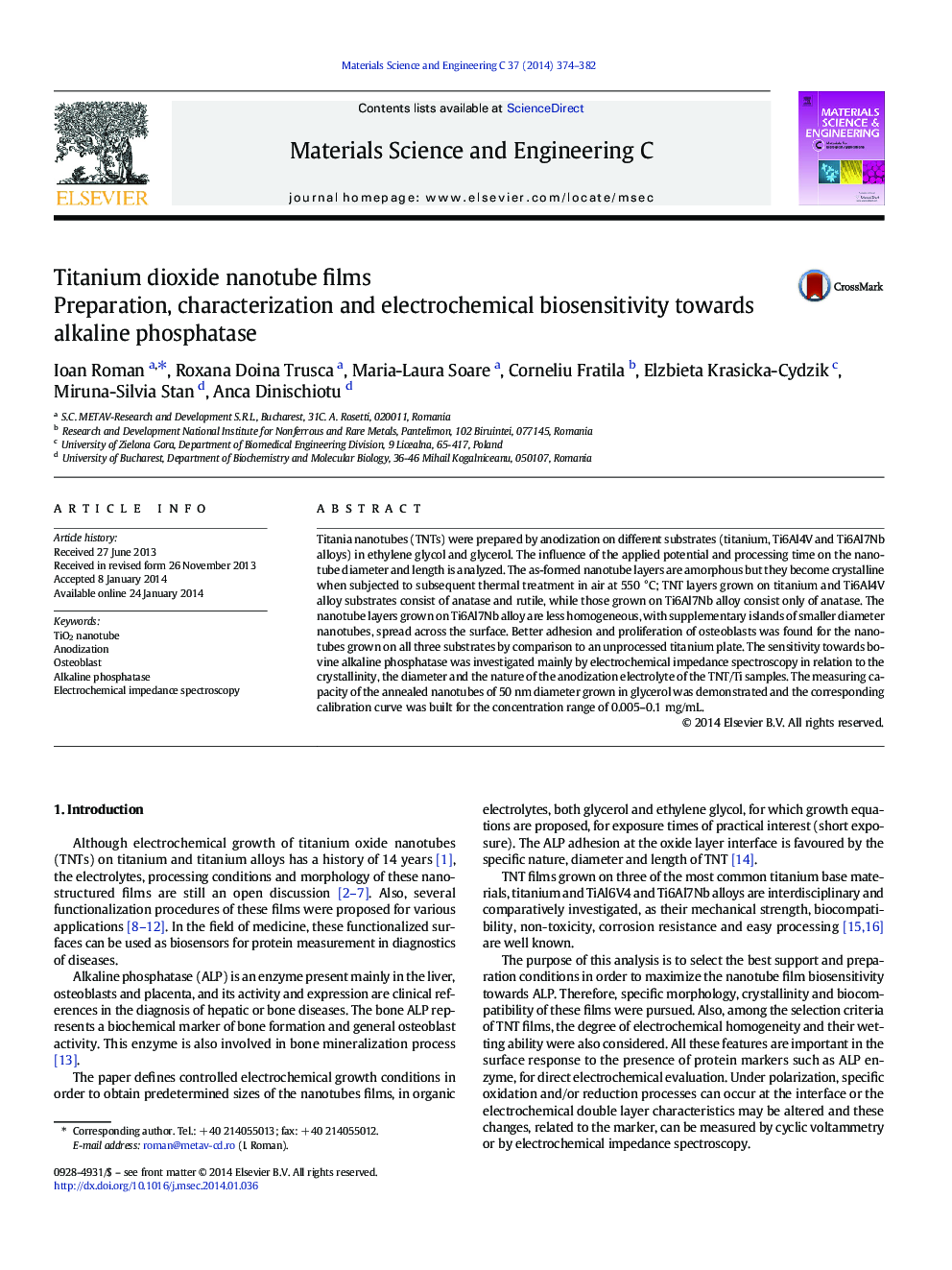| Article ID | Journal | Published Year | Pages | File Type |
|---|---|---|---|---|
| 1429022 | Materials Science and Engineering: C | 2014 | 9 Pages |
•Titania nanotubes (TNTs) on Ti, Ti6Al4V and Ti6Al7Nb substrates were prepared.•Quantitative dependences of anodization conditions on TNT features were established.•Morphology and electrochemical tests revealed inhomogeneity of TNT/Ti6Al7Nb films.•Particular characteristics of TNT films induce electrochemical sensitivity to ALP.•Annealed TNT/Ti impedimetric sensitivity towards ALP was demonstrated and quantified.
Titania nanotubes (TNTs) were prepared by anodization on different substrates (titanium, Ti6Al4V and Ti6Al7Nb alloys) in ethylene glycol and glycerol. The influence of the applied potential and processing time on the nanotube diameter and length is analyzed. The as-formed nanotube layers are amorphous but they become crystalline when subjected to subsequent thermal treatment in air at 550 °C; TNT layers grown on titanium and Ti6Al4V alloy substrates consist of anatase and rutile, while those grown on Ti6Al7Nb alloy consist only of anatase. The nanotube layers grown on Ti6Al7Nb alloy are less homogeneous, with supplementary islands of smaller diameter nanotubes, spread across the surface. Better adhesion and proliferation of osteoblasts was found for the nanotubes grown on all three substrates by comparison to an unprocessed titanium plate. The sensitivity towards bovine alkaline phosphatase was investigated mainly by electrochemical impedance spectroscopy in relation to the crystallinity, the diameter and the nature of the anodization electrolyte of the TNT/Ti samples. The measuring capacity of the annealed nanotubes of 50 nm diameter grown in glycerol was demonstrated and the corresponding calibration curve was built for the concentration range of 0.005–0.1 mg/mL.
